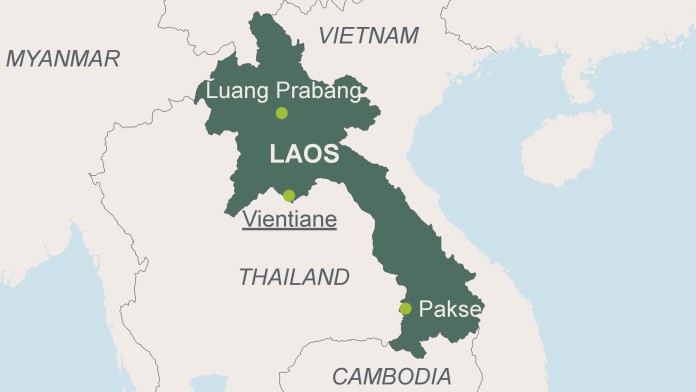
As of: 07/2019
In the last decades, there has been a significant decline and deterioration of natural forest resources in Laos. Forest transformation for agriculture and infrastructure, firewood collection and forest fires are considered the main causes for forest loss and the increasing degradation of the remaining forest areas. This threatens the livelihoods of the rural population, which live mostly from subsistence agriculture. The aim is to improve the conditions of selected forest ecosystems and the livelihoods of the local population through sustainable management of village forests.

Lao PDR has approximately 9.5 million ha of forest constituting 40% of the total land area. Despite efforts to sustainably manage forest resources, the magnitude of pressures is still severe. 70% of Lao PDR was under forest cover 60 years ago but since then deforestation rates have averaged about 0.3% of the country’s land area each year, with shifting cultivation, inappropriate upland farming practices, over-logging, mining and hydropower development being among the major drivers. During the 1990s the annual loss of forest cover was around 1.4%, giving an average forest cover loss of about 134,000 ha per year. Hydropower development in excess of 900 megawatts is envisaged in the Lower Mekong Basin, which will inundate almost 2 million hectares of land, threatening key conservation hotspots in Lao PDR. The government’s policy of land use planning and allocation to upland families has helped to stabilize the situation, especially over the last 10 years, and although forest cover has stabilized, forest quality continues to decline.
A total sum of EUR 7.7 million will be invested in the project. EUR 7 million are provided by the German Government and EUR 760.000 by the Government of Lao.
The Village Forest Management Project aims at achieving three outputs. Output 1 focuses on improving the capacities of the Government of Laos and the development of a supportive legal environment with regards to the village forestry. This includes support to the development of a national forestry policy, which will improve the legal certainty of land ownership through granting municipal and individual land titles, as well as the creation of framework conditions for private sector investments. The second output will focus on the application of financial sustainable and climate resistant forestry models under different framework conditions, which are based on safe land rights in the target villages. These forestry models will be implemented in natural forests and in plantations consisting of teak wood. An important criterion for the achievement is that the financial sustainability of the forest models must be achievable until the end of the project. Based on existing land use plans, land use management agreements will be negotiated with the communities and related forest management plans will be developed.
Furthermore, monitoring systems will be established, to ensure that agreements are respected by all parties involved. The activities included in the management plans and the related investment requirements will be implemented by the project. The third output focuses on the improvement of the socioeconomic status of the target villages. The first priority here is to support the families who lose income as a result of new forestry activities. Following are income generating measures that have a major positive impact on village forestry. The third priority is given to intensive technical and extended support services, which will be provided for all income-generating activities to ensure successful results. The project is implemented by the Ministry of Agriculture and Forestry (MAF) and consultancy services are provided by NIRAS – IP Consultant GmbH.
Through the introduction of different approaches for the protection and management of natural forest areas, a contribution for the improvement of the living conditions of the local population, which mainly consists of ethnic minorities, is achieved and at the same time, points out sustainable approaches for the use of natural resources. By improving forest management the project will make a contribution to global climate protection and climate change mitigation. The sustainable use of natural resources contributes to the conservation of biodiversity in Laos. Thus, the project contributes to UN Sustainable Development Goals and priorities of both, Laos and the Federal Government of Germany.
The project will make progress towards achieving the following SDGs:
KfW Group
KfW Development Bank